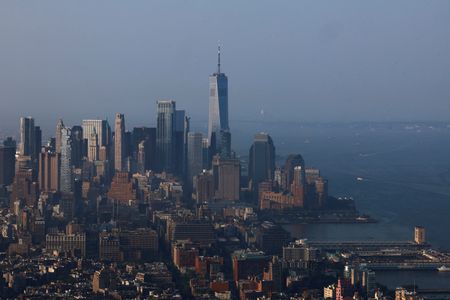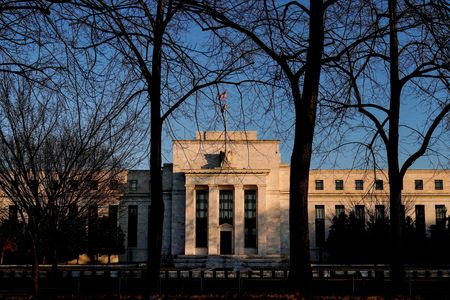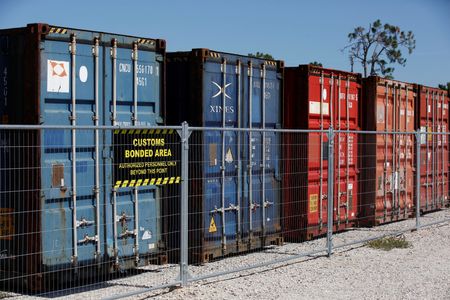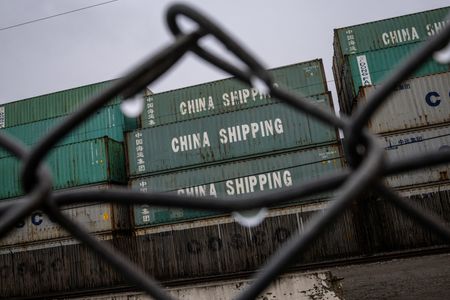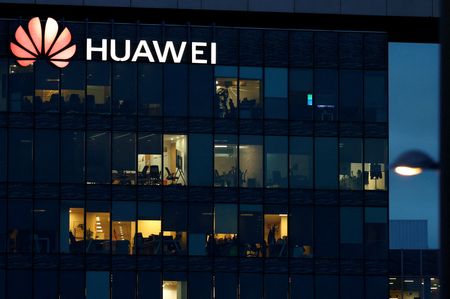By Indradip Ghosh
BENGALURU (Reuters) – The outlook for the U.S. economy remains weak despite a temporary cooling of the U.S.-China trade war, a Reuters poll of economists showed, with a debate over the country’s fiscal health hanging in the balance.
A 90-day truce to temporarily slash steep U.S.-China import duties has marginally reduced U.S. recession risks, but the fiscal outlook is worsening ahead of an imminent vote in Congress on President Donald Trump’s sweeping tax-cut bill following a sovereign credit rating downgrade from Moody’s on Friday.
Economists in a May 14-21 Reuters poll were unanimous the Trump administration’s policies have hurt the economy, with over 55% saying “significantly hurt”.
But after big downgrades to their growth and upgrades to inflation forecasts in April, economists kept these broadly unchanged in May.
“Moody’s is likely sending a message that the proposed tax bill is fiscally profligate… unless there is an abrupt move, the risk is that by the time Washington gets serious about the U.S.’s fiscal problems, tariffs might be the only available lever to meaningfully reduce the deficit,” noted Aditya Bhave, a senior U.S. economist at Bank of America.
“Another round of large tariff hikes would probably be more painful for the economy than a less expansionary fiscal package.”
The economy, which contracted 0.3% last quarter largely due to a record surge in imports, is forecast to grow 1.5% this quarter. It would grow just 1.4% this year, a sharp slowdown from last year’s 2.8%. Next year, it was forecast to expand 1.5%.
The median probability of a U.S. recession over the coming year did, however, decline to 35% from 45% in April.
Economists barely changed their views on inflation, expected to average above the Fed’s 2% target until at least 2027, echoing consumer expectations which are already at a multi-decade high.
“The bad news is the detente virtually locks in a slow growth, sticky inflation environment as the base case for the U.S. economy. The effective tariff rate at 13% is still substantially higher than where it was coming into the year (around 2%)… Policy uncertainty is high and recession risks remain elevated,” said Michael Gapen, chief U.S. economist at Morgan Stanley.
Fed officials have highlighted elevated risks of a resurgence in inflation, primarily due to U.S. tariff policies and appear to be in no hurry to cut rates anytime soon. The federal funds rate has stayed in a 4.25%-4.50% range since the start of this year.
Just over half of economists, 52 of 103, predicted the Federal Open Market Committee (FOMC) would resume cutting its key interest rate next quarter, most likely in September. That was in line with interest rate futures pricing.
A significant minority, 25, expected the reduction in the final quarter and 18 saw no cuts this year. Only eight forecast a June cut, compared to nearly 40% expecting at least one reduction by end-Q2 in the April survey.
There was no clear consensus on where the rate would be by end-2025. But about three-quarters of economists, 74 of 103, predicted it in a 3.75%-4.00% range or higher, a bigger majority compared to two-thirds in April.
“The two pauses (on tariffs) add a new degree of uncertainty to the outlook for both growth and inflation,” said Chris Low, chief economist at FHN Financial.
“FOMC participants insist on seeing all of the inflation directly attributable to tariffs before cutting rates so they might have to wait until the fourth quarter, or even early next year, before they have sufficient clarity to do anything.”
(Other stories from the Reuters global economic poll)
(Reporting by Indradip Ghosh; Polling by Shaloo Shrivastava, Debrah Gomes and Reshma Ann Samuel; Editing by Ross Finley and Toby Chopra)

